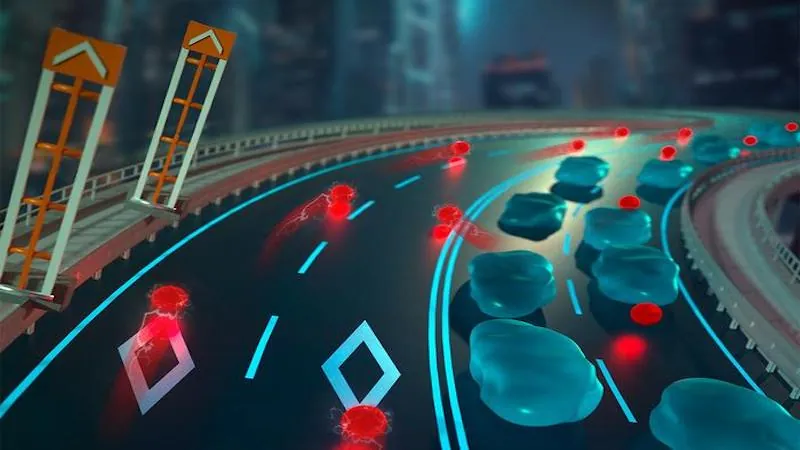
Groundbreaking Ion Speed Achievement Could Revolutionize Battery Charging and Biosensing Technologies
2024-11-19
Author: Li
Groundbreaking Ion Speed Achievement Could Revolutionize Battery Charging and Biosensing Technologies
A recent scientific breakthrough has shattered records in ion movement, paving the way for significant advancements in technology from faster battery charging to sophisticated biosensors and even soft robotics. Researchers from Washington State University (WSU) and Lawrence Berkeley National Laboratory have unveiled a method to accelerate ionic movement over tenfold within mixed organic ion-electronic conductors. These innovative conductors uniquely merge the ion signaling utilized by biological systems with the electron signaling integral to modern computing.
The team's findings, published in the prestigious journal Advanced Materials, describe a revolutionary approach: by engineering molecules that effectively attract and concentrate ions into a specially designed nanochannel, they created a miniature "ion superhighway." This breakthrough could have substantial implications for energy storage and battery technology, as it allows simultaneous movement of ions and electrons—two processes crucial for efficient energy transfer.
Brian Collins, a physicist at WSU and the lead author of the study, emphasized the groundbreaking nature of this research. "Being able to control these signals that life uses all the time is a game-changer," Collins stated. The study revealed that although ions initially flowed through the conductors, they faced hinderance from the complex internal structures inhibiting faster electron flow.
By designing a streamlined, nanometer-sized channel dedicated exclusively to ion movement, the researchers were able to enhance ionic velocity dramatically. Drawing inspiration from biological systems, they utilized hydrophilic (water-attracting) molecules to line the nanochannel, enabling ions from an electrolyte solution to travel through it at unprecedented speeds—over ten times faster than they would in plain water. This success marks a new ion speed record across all materials studied to date.
In a fascinating twist, when the channel was coated with hydrophobic (water-repelling) molecules, ions were discouraged from entering, forcing them back into the slower pathways. This insight about the molecular behavior was vital, revealing that chemical reactions could dynamically alter the attractiveness of the channel, effectively opening or closing the ion superhighway—mimicking the way living cells manage ion transport across their membranes.
The team went a step further, crafting a sensor capable of detecting chemical reactions nearby the channel. This sensitivity emerges from the ability of the ion superhighway to generate electrical pulses when opened or closed by such reactions—an innovation that presents potential uses in various fields, from environmental monitoring (such as detecting pollutants) to neuroscience applications, observing neuronal activity.
Looking ahead, Collins underscores the importance of understanding the fundamental mechanisms behind these remarkable ion movements. "The next step is to explore how to harness this ion transport phenomenon to expand its application in technology," he said.
With this advancement, we stand on the brink of a new era—one where everyday devices could charge in seconds, while advanced biosensors could provide real-time data about our environment and health. The potential impact is immense, possibly transforming industries centered on energy storage, health monitoring, and beyond. Keep an eye on these developments; the future is shaping up to be faster and more efficient than ever before!


 Brasil (PT)
Brasil (PT)
 Canada (EN)
Canada (EN)
 Chile (ES)
Chile (ES)
 España (ES)
España (ES)
 France (FR)
France (FR)
 Hong Kong (EN)
Hong Kong (EN)
 Italia (IT)
Italia (IT)
 日本 (JA)
日本 (JA)
 Magyarország (HU)
Magyarország (HU)
 Norge (NO)
Norge (NO)
 Polska (PL)
Polska (PL)
 Schweiz (DE)
Schweiz (DE)
 Singapore (EN)
Singapore (EN)
 Sverige (SV)
Sverige (SV)
 Suomi (FI)
Suomi (FI)
 Türkiye (TR)
Türkiye (TR)